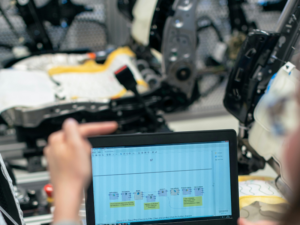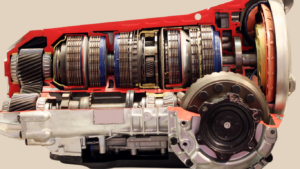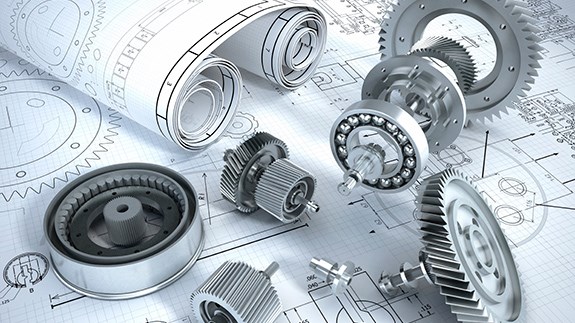
Integer posuere erat a ante venenatis dapibus posuere velit aliquet sites ulla vitae elit libero






Bearings are essential for the operation of mechanical power transmission equipment, such as motors, drives, shafts, gearing, and other associated components. They ensure that drive trains remain aligned, which is necessary for the efficient transfer of power. When it comes to these essential components, however, there are lot of factors, which should be considered like Lubrication, alignment, vibration, Selection of the appropriate bearing, and the quality and dependability of the manufacturer are some of the things that fall under this category.
There are many various types of bearings available to facility managers and technicians in today’s world, each of which possesses a unique set of features and serves a unique purpose. Needle bearings, deep groove ball bearings, roller bearings, and cam followers are the different types of bearings available. For larger bearings, a journal that projects through a bushing and is fixed on a support pedestal is sometimes included.
No matter which bearing is chosen, the first order of business is to implement sound maintenance procedures, as these are essential to the successful running of the plant. It is possible for machinery and equipment to experience an additional damage if proper maintenance procedures such as lubrication and vibration monitoring not performed.
As a component of bearing maintenance, it is necessary to apply the appropriate lubrication at the intervals indicated by the manufacturer of the bearings, while also taking into account the amount of use the bearings get from the various pieces of machinery and equipment they support. It is also essential to do regular inspections in order to rule out the possibility of foreign particles or debris penetrating the lubricant and bearing cavity or housing. This includes water as well as other liquids and solids.

In a nutshell, make sure that your bearings are always lubricated with the appropriate oil that has been specified by the manufacturer. Make sure there is no debris in your bearings. If you allow metal chips, corrosion, or dirt to accumulate inside of a bearing, that bearing will eventually fails. If you have an application that is exceptionally unclean, selecting a sealed or shielded bearing from the beginning can help to prevent damage caused by the entry of metal or dust particles.
The performance of both the system and the machine as a whole as well as the power transmission components might be negatively impacted if bearing lubrication is neglected and premature failure and misalignment result comes.
It is found that due to lack of appropriate lubrication in the application is the cause of up to 70 % of bearing failures. The purpose of bearing lubrication is not only to lessen the amount of heat and friction produced but also to forestall the premature build-up of contaminants and corrosion. The bearing size, abrasion from any contaminant, and operation time of the machine in which the bearing is installed all play a role in determining the extent to which this factor has an impact on the underlying application.
When lubrication is inadequate or neglected, it can lead to expensive and catastrophic effects. A single unlubricated tiny bearing can have a domino effect, leading to misalignment and the eventual failure of other components that the power transmission components are responsible for delivering to.
It’s very likely that improper or absence of lubrication will lead to excessive wear and possibly catastrophic failure. This is obviously more of a cause for concern and a potential safety hazard if the bearing is located on a large or expensive machine. The failure of one bearing is likely to trigger the failure of several other components like a domino effect. In the end, it’s an issue that may be avoided entirely with proper care.”
In most cases, alignment will involve matching a driver to the vehicle that will be doing the driving. Instrumentation that is both accurate and complicated may be required for proper alignment. When your bearings are out of alignment, this causes an unwanted or angular force to be applied to them. Incorrect installation is another prevalent factor that contributes to misalignment and is a leading cause of bearing failure.

Misalignment can occur during installation or operation, like a bent shaft. The maximum misalignment that is permitted for a certain bearing can differ depending on the manufacturer; however, you can find this information in the product manual for your bearing. Depending on how important your application is, you can either manually measure in four different spots or use laser alignment. It is possible to eliminate misalignment brought on by routine operations by occasionally rechecking the alignment after it has been performed.
In addition, a vibration monitoring program will assist in the early and frequent detection of misalignment. In order to compare captured vibration wave amplitudes that demonstrate a growing degree of misalignment, many facility managers will either employ built-in vibration monitoring sensors or undertake periodic manual vibration monitoring. Both of these options are available. In most cases, this requires recording a measurement of the vibration along all three axes (vertical, horizontal, and axial) and storing it in a history file. Readings can be taken at regular intervals and compared, allowing for the identification of trends that suggest rising vibration, which indicates bearing failure and misalignment. These kinds of issues can be avoided and the risks of misalignment can be mitigated by employing a vibration monitoring procedure that is rigorous and methodical.
However, the majority of bearings are not designed to last as long as the machines that they support and will eventually need to be replaced. This is necessary in order to maintain proper alignment and support for the power transmission. To successfully change bearings, however, you need to ensure that you have a sufficient number of spares available. Additionally, it implies that plant managers and maintenance specialists are aware of the lifecycle of the bearings they are responsible for maintaining, as well as the early warning indications of bearing failure, as well as when and how to replace the bearings.
ZNL along with the majority of manufacturers publishes life expectancy, and bearings are absolutely capable of meeting or exceeding that life expectancy provided that you follow the necessary mounting and maintenance recommendations. There are accessible formulas that calculate the bearing’s life expectancy based on the load, speed, and a number of times it is used. These calculations can be used to calculate the necessary amount of spare parts.
In order to have the best possible inventory of spare parts, it is necessary for the application of the bearing to match both the type of bearing and the manufacturer. Ball bearings and roller bearings are two distinct types of bearings that serve distinct purposes in a variety of contexts and applications. In many cases, the operational parameters and performance characteristics of an application will dictate the types of bearings that are most suited for the application.

It is crucial to select bearings from manufacturers that satisfy your quality expectations and maintain supply chain support, the one as ZNL Bearings. This is in addition to selecting the appropriate type of bearing, which is important. The selection of the appropriate manufacturer requires careful deliberation due to the fact that wide support may require the use of bearings from more than one manufacturer. In addition, you may wish to evaluate the performance of a manufacturer’s bearings in order to assess the bearing lifespan, ease of lubrication, sealing, availability, and ease of changing out the bearings. In such cases, ZNL is client-centric and flexible.
Bearing selection depends on many different elements of your application. In general, you need to figure out whether you have a high-speed application, a low-load application, or a low-speed application with a high load. Ball bearings are superior in performance when operating at high speeds, whereas roller bearings can withstand greater shock loading. If you are using a sealed bearing to prevent impurities, you will want to use a ZNL Bearings because ZNL Bearings typically offer higher quality seals to prevent impurities. If you are using a sealed bearing, you will want to use a ZNL Bearings.
Bearings may look like an unimportant component of power transmission equipment. They can function with only the barest minimum of supervision for a number of hours, days, months, or even years. Nevertheless, they are essential to the transmission of power and serve a significant function. They are frequently exposed to severe environmental and operating conditions, and they have the potential to become a single point of failure.

ZNL Bearings is continuously developing new technologies to make their bearings more long-lasting and to give innovative sealing solutions for the most demanding applications. ZNL Bearings are distinguished from their less expensive counterparts not only by their longer-lasting coatings and superior sealing technologies, but also by the superior materials from which ZNL Bearings are constructed.
It is essential to avoid thinking of bearings in the same way as other types of commodities. It’s not just another consumable item or disposable product; it’s more than that. Also, try to avoid making purchases based solely on cost. Instead, opt for bearings that are high in quality and manufactured by renowned companies that adhere to stringent quality control standards. When it comes to power transmission, bearings should be treated as an essential component.
In most cases, plant managers will desire bearings to have a long lifespan. It’s possible that bearings won’t last forever. However, if clients find that they need to replace them on a regular basis, they will search elsewhere.
You’ll be well on your way to enhancing plant efficiency and improving overall productivity if you choose quality bearings and maintain the bearings with proper lubrication and alignment.
(Note: Links to various youtube channels are provided with the images to help you understand about the gears)